Volume 16, Issue 1
Jan. 17, 2024
On the afternoon of the first day of December 2023, the UN conference room in New York was filled with long and powerful applause, when the state parties to the Treaty on the Prohibition of Nuclear Weapons (TPNW), known informally as the “nuclear ban treaty,” concluded the second meeting on implementation since it entered into force in January 2021.
It has been just five years since the treaty was concluded in 2017, but the TPNW is already helping to bolster the international nuclear nonproliferation and disarmament architecture by reinforcing the norms against nuclear weapons use and providing a path for non-nuclear weapon states and communities and populations adversely affected by nuclear weapons to engage in efforts to advance disarmament and address the damage done by past nuclear weapons testing and use.
Since the TPNW opened for signature, the number of states parties has grown to 70. Significantly, the number of non-signatory observer states that have joined the TPNW meetings to learn more about the treaty has also grown. Their participation underscores that states inside and outside the TPNW can advance progress toward their shared goals: preventing nuclear war and moving closer to the peace and security of a world without nuclear weapons.
Given the treaty is steadily becoming a part of international nuclear nonproliferation and disarmament architecture, it is imperative for the United States, nuclear-armed states and states under the U.S. nuclear extended deterrence "umbrella" to consider how they can also productively engage with the treaty and its states parties, including by participating as observers in the third meeting of TPNW states parties, which will be held in March 2025.
Impact of the TPNW Since Its Entry Into Force
When it entered into force in January 2021, the TPNW became the first international legally binding agreement to comprehensively prohibit all activities related to nuclear weapons, including possession, use, threats of use, nuclear explosive testing, production, and transfer. This treaty created a space for nonnuclear-armed states along with civil society to collectively act for nuclear disarmament, which is in line with the obligation set forth in Article VI of the nuclear Nonproliferation Treaty (NPT) to "pursue negotiations in good faith on effective measures relating to cessation of the nuclear arms race at an early date and to nuclear disarmament, and on a treaty on general and complete disarmament under strict and effective international control."
The first meeting of states parties was held in Vienna in June 2022 with participation from 49 states parties, 34 observer states, and 85 NGOs. Coincidentally, the meeting was convened just a few short weeks after Russia's full-scale invasion of Ukraine and its associated nuclear rhetoric.
TPNW states parties provided leadership by issuing a strong political statement condemning unequivocally nuclear weapons threats of any kind under any circumstances. The strong political declaration adopted in the first TPNW meeting accelerated the growing international effort to condemn and push back against Russian President Vladimir Putin’s implied threats of nuclear weapons use in the context of the ongoing Ukraine war.
Borrowing from the terminology of the TPNW states, NATO Secretary-General Jens Stoltenberg stated Sep. 27, 2022, that “any use of nuclear weapons is absolutely unacceptable.” German Chancellor Olaf Scholz declared Oct. 8, “We need to give a clear answer to nuclear threats. They’re dangerous for the world, and the use of nuclear weapons is unacceptable.” On Nov. 4, Chinese President Xi Jinping said the international community should “jointly oppose the use of, or threats to use, nuclear weapons.” The powerful Group of 20 agreed Nov. 16 at their summit in Indonesia that threats and use of nuclear weapons are “inadmissible.”
Just as importantly, the first meeting drew up a 50-point action plan for treaty implementation, which includes, inter alia, the establishment of a Scientific Advisory Group and three informal working groups in relation to the topic of verification, victim assistance/environmental remediation, and universalization. This also led to the appointment of a focal point for implementing gender provisions of the treaty as well as facilitators to promote the TPNW’s complementarity with other treaties.
Humanitarian Perspective Remains in the Core of the Second TPNW Meeting
At the second TPNW meeting held from Nov. 27 to Dec. 1, 2023, a total of 59 states parties, 35 observer states, and representatives from 122 civil society organizations, including the Arms Control Association, participated in the week-long meeting to evaluate progress and to reaffirm their commitment to the realization of a nuclear-weapon-free world. Since the first meeting of states parties, seven more states had signed the treaty, bringing the total number to 93 states, and five more states have ratified it, bringing the total to 70.
Like the first meeting of states parties in 2022, the second meeting produced a political statement that underscores that the TPNW is compatible with the other key elements of the nuclear nonproliferation system, including the NPT, the Comprehensive Nuclear Test Ban Treaty (CTBT), and nuclear weapons-free zone treaties. The 2023 statement also sought to further reinforce the unacceptability of nuclear weapons threats, as well as question the morality and sustainability of nuclear deterrence as instruments of foreign and military policy. The states parties also took tangible steps to fulfill the key parts of their 2022 action plan, specifically, their obligations under the TPNW to assist populations affected by nuclear weapons testing and use.
Mexico’s Ambassador Juan Ramón de la Fuente, who served as the president of the second meeting, allocated significant time for a thematic debate on the humanitarian impact of nuclear weapons. In 2022, Austria chose to organize a Conference on the Humanitarian Impacts of Nuclear Weapons on the eve of the first meeting of TPNW states parties. This was the fourth such conference since 2014. Mexico chose to focus formal meeting time on the humanitarian impacts issue by inviting scientists from the Scientific Advisory Group, a speaker from the International Committee of Red Cross, and various representatives from NGOs and affected communities, including Australia, Kiribati, and Japan to share their perspectives and findings. This set the scene and reminded all participants of what is at stake and why progress on nuclear disarmament is so vital. The states decided at the meeting to regularize the practice by empowering “Presidents of future Meetings of States Parties shall have the option to convene thematic debates.”
Victim Assistance and Environmental Remediation Discussion Underway
As was the case with the first meeting, there was significant and tangible support from both state parties, observer states, and civil society on actions to provide assistance to victims of nuclear weapons use and testing and for associated environmental remediation, as mandated by Articles VI and VII of the treaty. In order to fulfill these so-called positive obligations of the TPNW, states agreed to continue intersessional discussions on a voluntary reporting system as well as the objectives for developing proposals to establish the international trust fund to support future assistance and remediation work. This effort is reflected in the decision adopted at the meeting, as two out of five decisions are devoted to this topic.
There remain many questions still to be answered about how this process will play out, some of which are outlined in the intersessional working group’s report. These include but are not limited to who is contributing to the trust fund; who can receive such funds; what administrative structures are necessary. Kazakhstan and Kiribati, co-chairs of an informal working group on this topic are exploring how those decisions can be made.
Kazakhstan and Kiribati successfully passed a relevant resolution at the United Nations General Assembly (UNGA) in the fall of 2023 with 171 votes in favor, six in opposition, and four in abstention. This UNGA resolution, which was later adopted at the end of 2023, calls for further international cooperation and discussion on victim assistance and environmental remediation through multiple international frameworks and support for affected populations while recognizing the responsibility of nuclear use and testing. This voting result demonstrates the possibility that this implementation framework can be creative by extending to outside of the TPNW, and also contribute to the universalization of this key treaty objective.
Delegitimizing Nuclear Weapons
The second TPNW conference of state parties, like the first, issued a strong political declaration that underscores that “the continued existence of nuclear weapons and lack of meaningful progress on disarmament undermine the security of all States, aggravate international tensions, heighten the risk of nuclear catastrophe and pose an existential threat to humanity as a whole.”
TPNW states parties also decided to be more explicit regarding their concerns about the dangers of nuclear weapons and military policies based on the theory of nuclear deterrence. At the suggestion of the Austrian delegation, the meeting decided to establish a “consultative process on security concerns of TPNW states,” which aims to reframe the debate of nuclear disarmament as a necessary instrument to accommodate human security and national security for all states parties.
In parallel with the strategy of stigmatizing nuclear weapons by highlighting the humanitarian impacts of nuclear weapons, the states parties decided to “challenge the security paradigm based on nuclear deterrence” leveraging scientific research on humanitarian consequences as well as nuclear risks.
The political declaration argues that nuclear weapons do more harm than good to the human beings. “The perpetuation and implementation of nuclear deterrence in military and security concepts, doctrines and policies not only erodes and contradicts non-proliferation, but also obstructs progress towards nuclear disarmament,” the TPNW political declaration states.
The TPNW state parties further noted that “[T]his is not only a security issue. In a world where challenges persist in meeting basic human needs, the investment of substantial financial resources in modernizing and expanding nuclear arsenals is indefensible and counterproductive as it comes at the expense of investment in sustainable development for genuine human wellbeing, as well as disarmament, education, diplomacy, environmental protection, and health.”
The Role of Scientists and Research
Another unique facet of the TPNW is its newly established Scientific Advisory Group. Following the decision taken in the first meeting to establish a group of scientists to advise and “assist States Parties in implementing the treaty and in strengthening the credibility of the implementation process,” the group was formed earlier last year. The group is co-chaired by Dr. Patricia Lewis from Chatham House and Dr. Zia Mian from Princeton University. The TPNW Scientific Advisory Group presented its first report at the meeting and is expected to play an important role in advancing the TPNW, in part because most states parties do not have as significant technical experience and capacity on nuclear weapons and nuclear disarmament as do the nuclear-armed states and their allies who play a more active role in other nonproliferation and disarmament treaty regimes, particularly the Nonproliferation Treaty.
Both thematic debate and the Scientific Advisory Group are bringing a “vibrant atmosphere and better collective learning,” according to Elayne Whyte, the 2017 TPNW negotiation conference president and former Costa Rican Ambassador to the United Nations in Geneva.
Additional Observer States
As was the case with the first meeting, states parties welcomed the participation of 35 observer states at the second meeting, 12 of which had not attended the first meeting. Among the observer states were: Australia, Belgium, Egypt, Germany, and Switzerland. By attending the TPNW meeting as observers, these states were able to deepen their understanding of the treaty and engage with states that see nuclear weapons as a liability, not an asset.
Observers can support the TPNW without becoming a member state, by expressing their interests and sharing comments at the meeting. Switzerland and Germany, for instance, have expressed strong support for advancing the TPNW’s provisions on victim assistance and environmental remediation since the first meeting. During the intersessional period between the first meeting and the second meeting, a think tank that has close ties with the German Green Party, in collaboration with civil society, created a project titled “Nuclear Weapons and Their Humanitarian and Ecological Consequences.” Switzerland also said that it “continues to consider the humanitarian consequences as an area of work that can unite all stakeholders.”
Further, observer states can keep TPNW member states accountable for their goals. A meeting of states parties of the TPNW is not only a place to discuss how to advance the treaty, but also serves as an opportunity to ensure that member states and civil society are earnest about their commitments.
Looking Ahead
The states parties elected the next president for the third meeting of states parties, Akan Rakhmetullin, the Permanent Representative of the Republic of Kazakhstan to the United Nations, and agreed that the meeting would take place in March 2025. At an event co-hosted by the Kazakh embassy in Washington D.C. and the Arms Control Association Dec. 12, 2023, Kazakhstan highlighted that their presidency will focus on victim assistance and environmental remediation; universalization of the treaty (Kazakhstan will also convene a joint meeting of nuclear-free-zones in Kazakhstan in 2024); and building mutual trust between proponents and opponents of the TPNW.
What the past two meetings of states parties with observer states have proven is that TPNW is not widening the gap between opponents and proponents. The TPNW’s approach to nuclear disarmament is not counterproductive or causing potential repercussions, as often opponents of the treaty have persistently argued, rather, it has demonstrated that states outside of the TPNW can engage in discussions while not being part of the treaty and thus contribute to the common shared goal for all: the prevention of nuclear conflict and the total, verifiable elimination of nuclear weapons.
The United States, other nuclear-armed states, and some of their allies may not yet be ready to join the TPNW or engage with states parties, however, it is time for them to recognize that the TPNW is a reality. In the meantime, before the next meeting in March 2025, there are several ways for the United States can move engage with the treaty without harming the United States' or its allies’ national security interests.
First, members of Congress can and should more carefully evaluate the role of the TPNW in reducing nuclear dangers. At the second TPNW meeting, U.S. elected officials Representative Jim McGovern (D-Mass.) and Massachusetts State Representative Lindsay Sabadosa attended the meeting and parliamentary conference, where 23 parliamentarians from 14 countries including Canada, Japan, Germany, Scotland, Belgium, France, Italy, Australia, Norway, and the United States gathered. Those representatives shared “the collective sentiment that many pressing challenges underscore the urgency and relevance of the mission embodied by the TPNW” and reaffirmed their commitment to activate TPNW discussion in their respective parliaments and engage with their own governments and people, according to the joint statement.
As a result of the growing presence of the TPNW in the international nonproliferation and disarmament structure, the treaty can no longer be dismissed. In early 2023, Rep. McGovern introduced a resolution titled Embracing the goals and provisions of the Treaty on the Prohibition of Nuclear Weapons to the House and gained support from over 40 members of Congress.
To move forward, members of Congress should commit to engage more substantively on how to advance nuclear risk reduction options including TPNW, to question the U.S. government on national positions on this matter, and to respond to constituent concerns about how to advance nuclear disarmament diplomacy and avoid nuclear war.
Second, the White House and the State Department need to recognize that the TPNW has become more of an asset than a liability. Despite the skepticism from the governments of the world's nuclear-armed states, the TPNW is developing into a strong new force against dangerous nuclear policies. These efforts to both delegitimize and stigmatize nuclear weapons serve as an important safeguard against rising nuclear tensions between nuclear-armed adversaries and nuclear threats from the likes of Russian President Vladimir Putin and North Korean strongman Kim Jong-un. The TPNW is also a reminder that the nuclear-armed states need to heed international calls for tangible diplomatic dialogue on nuclear disarmament, which they are obligated to pursue under the NPT.
More productive engagement with the TPNW state parties on the shared goal of advancing nuclear disarmament can also benefit U.S. national interest by building ties with states that share the goal of strengthening the NPT, advancing U.S.-Russian and U.S.-Chinese dialogue on nuclear arms control and disarmament and on reducing the risk of nuclear war. The TPNW originated from the frustration of non-nuclear weapons states and dissatisfaction with the lack of progress by the NPT nuclear-armed states in fulfilling their disarmament obligations under Article VI of the NPT. As the TPNW moves forward, the United States can and should join the conversation through the meetings of TPNW states parties.
The perception gap between states that believe nuclear weapons are essential to their security and the TPNW states parties that do not is both a challenge and an opportunity. Through TPNW meetings, the United States, other nuclear-armed states, and their allies can and should seize the chance to engage with TPNW states parties to better understand the wide range of perspectives and concerns about nuclear weapons. In today’s multi-polar world, this approach can help build bridges with the many states that seek to accelerate progress toward a world without the fear of the catastrophic impacts of nuclear weapons.—SHIZUKA KURAMITSU, research assistant
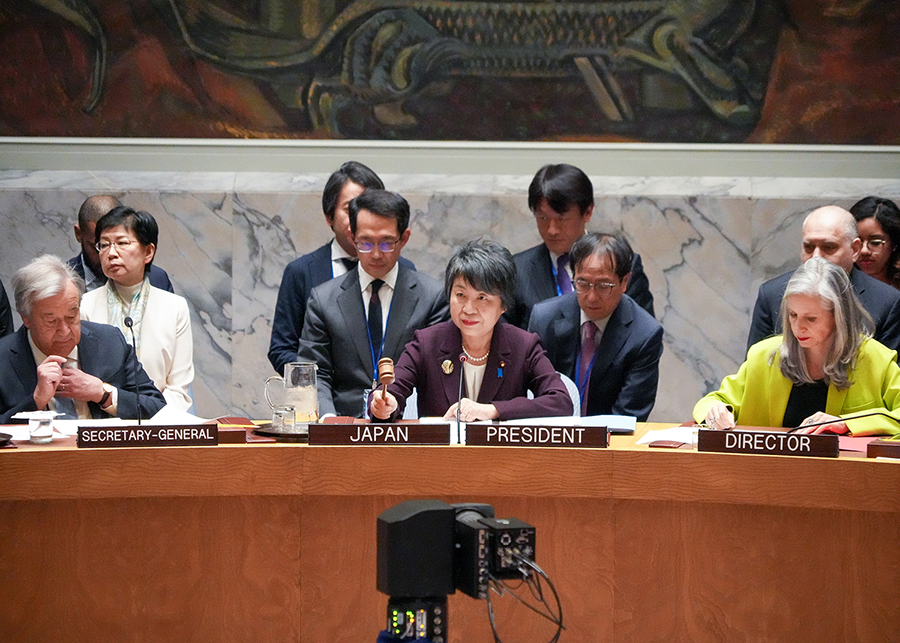 Japanese Foreign Minister Yoko Kamikawa described the meeting as “an opportunity for UN member states to share concrete ideas and proposals to accelerate the realization of a world without nuclear weapons” in an op-ed published by PassBlue on March 17.
Japanese Foreign Minister Yoko Kamikawa described the meeting as “an opportunity for UN member states to share concrete ideas and proposals to accelerate the realization of a world without nuclear weapons” in an op-ed published by PassBlue on March 17.




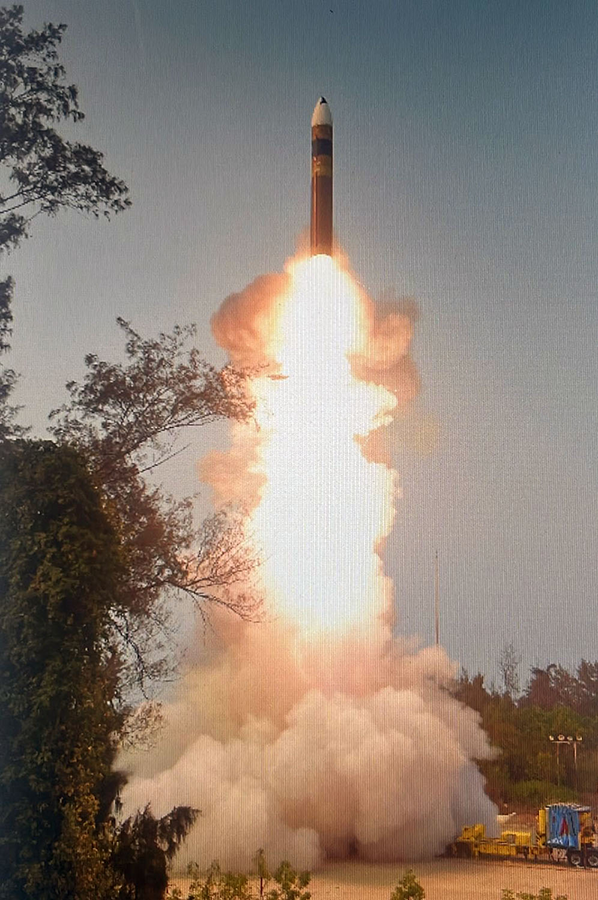 In a social media post on March 11, Indian Prime Minister Narendra Modi commended efforts by the national Defence Research and Development Organisation (DRDO). “Proud of our DRDO scientists for Mission Divyastra the first flight test of indigenously developed Agni-5 missile with Multiple Independently Targetable Re-entry Vehicle (MIRV) technology,” Modi wrote.
In a social media post on March 11, Indian Prime Minister Narendra Modi commended efforts by the national Defence Research and Development Organisation (DRDO). “Proud of our DRDO scientists for Mission Divyastra the first flight test of indigenously developed Agni-5 missile with Multiple Independently Targetable Re-entry Vehicle (MIRV) technology,” Modi wrote.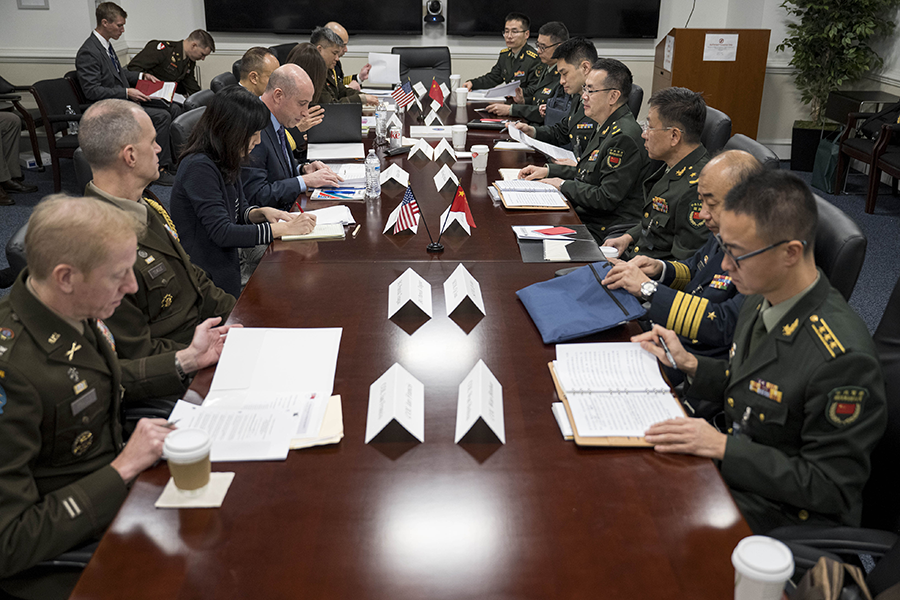 Two days of meetings, called the China-U.S. defense policy coordination talks, took place Jan. 8-9 at the Pentagon. It was the first formal in-person encounter between the two militaries since January 2020.
Two days of meetings, called the China-U.S. defense policy coordination talks, took place Jan. 8-9 at the Pentagon. It was the first formal in-person encounter between the two militaries since January 2020.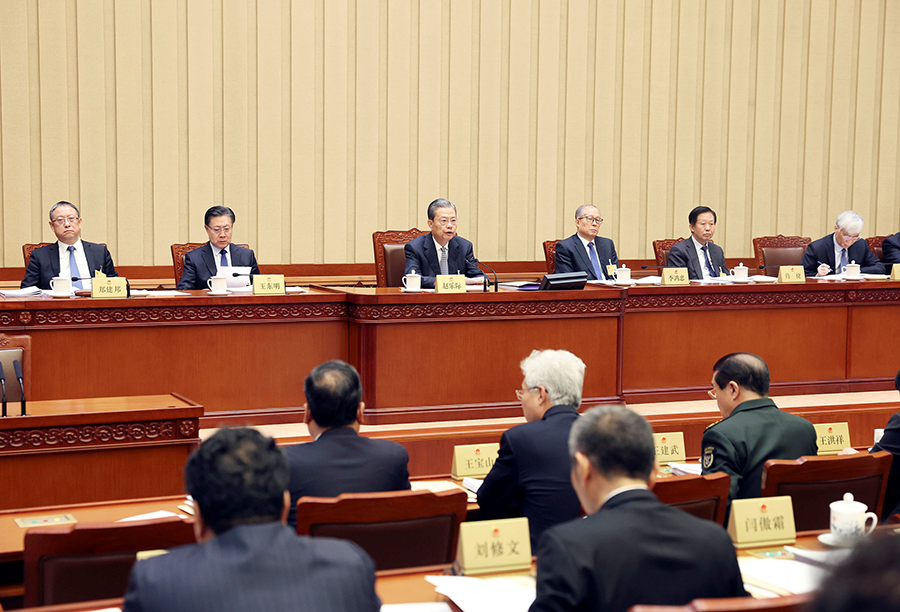 The Standing Committee of the National People’s Congress, China’s national legislative body, announced on Dec. 29 the dismissal of nine senior military officials of the People’s Liberation Army (PLA). Some of those affected were senior members of the PLA Rocket Force, which is responsible for overseeing the country’s conventional and nuclear land-based missiles.
The Standing Committee of the National People’s Congress, China’s national legislative body, announced on Dec. 29 the dismissal of nine senior military officials of the People’s Liberation Army (PLA). Some of those affected were senior members of the PLA Rocket Force, which is responsible for overseeing the country’s conventional and nuclear land-based missiles.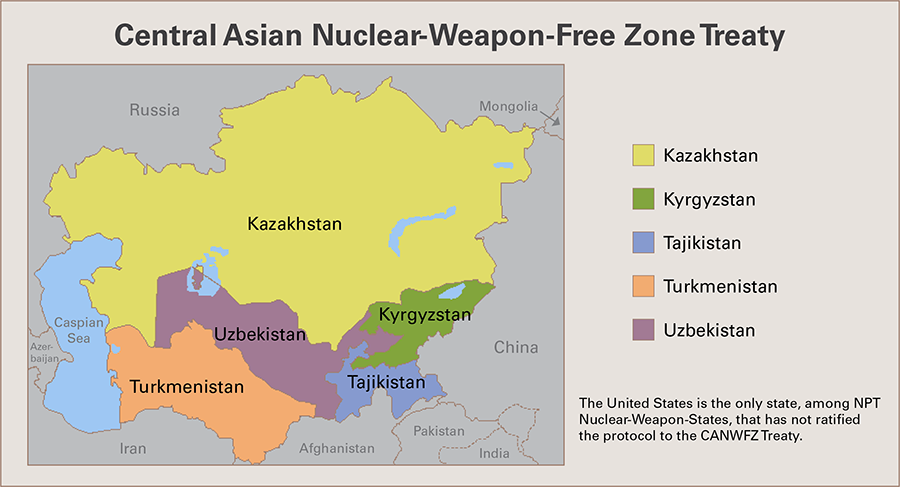
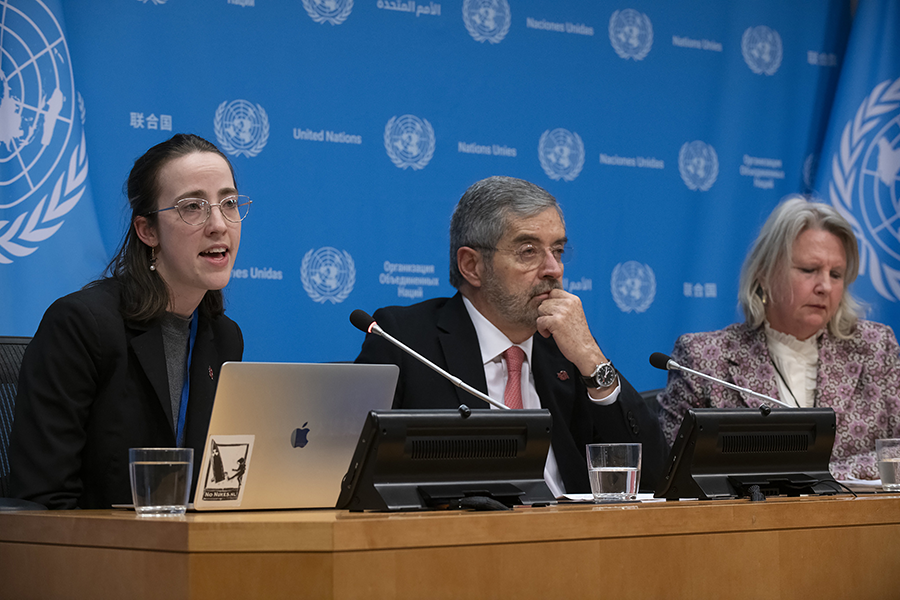 At their second annual TPNW meeting held Nov. 27 to Dec. 1 in New York, they approved a political outcome document that unveiled the new strategy, declaring that the states-parties “will not stand by as spectators to increasing nuclear risks and the dangerous perpetuation of nuclear deterrence.”
At their second annual TPNW meeting held Nov. 27 to Dec. 1 in New York, they approved a political outcome document that unveiled the new strategy, declaring that the states-parties “will not stand by as spectators to increasing nuclear risks and the dangerous perpetuation of nuclear deterrence.”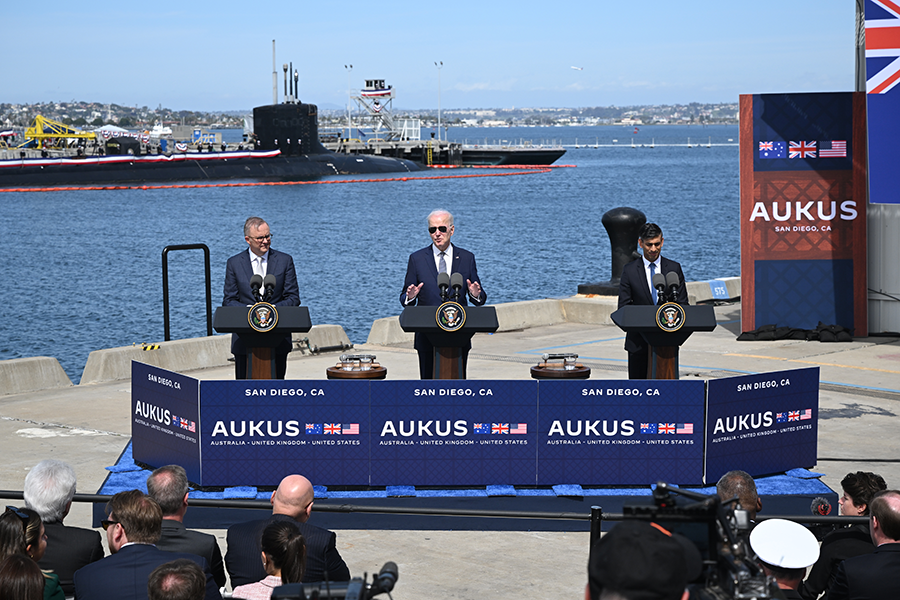 The United States now relies on highly enriched uranium to provide safe, long-lived, and reliable naval propulsion fuel. But nonproliferation experts have been urging a switch to LEU, which is more difficult to convert for use in nuclear weapons.
The United States now relies on highly enriched uranium to provide safe, long-lived, and reliable naval propulsion fuel. But nonproliferation experts have been urging a switch to LEU, which is more difficult to convert for use in nuclear weapons.